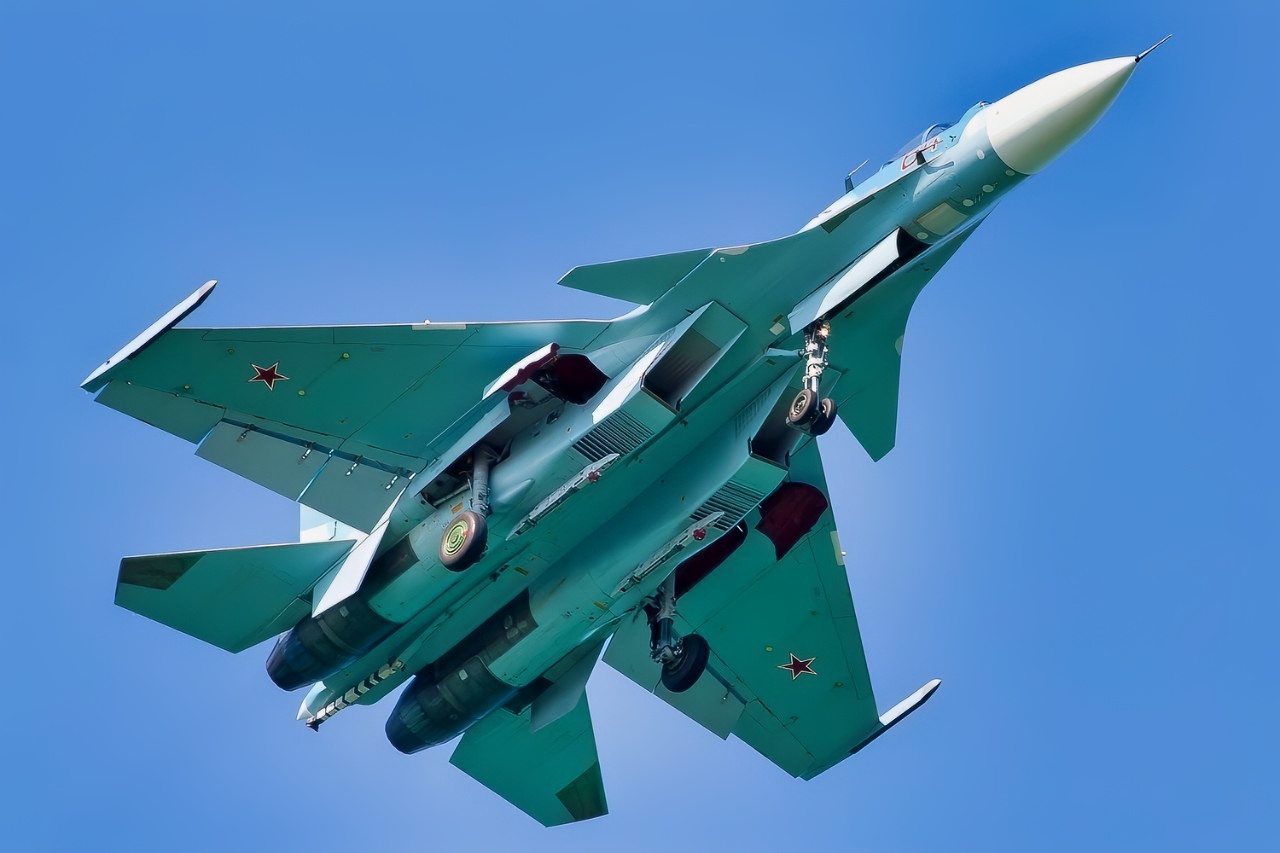Key Points and Summary – China’s J-15 “Flying Shark” carrier fighter is a direct clone, reverse-engineered from a Russian Su-33 prototype acquired from Ukraine in the early 2000s.
-Significant problems have plagued the program, chief among them underpowered and unreliable domestic engines.

Su-33 Flanker from Russia. Image Credit: Creative Commons.

Sukhoi Su-33 launching from the Admiral Kuznetsov.
-This critical flaw meant early J-15s could not take off from China’s ski-jump carriers with a full combat load, severely limiting their effectiveness and leading to fatal crashes.
-While the J-15 has been upgraded with modern radar, it is primarily viewed as a stopgap that the stealthy J-35 will eventually replace.
The Chinese Carrier Fighter J-15 Was Cloned From a Ukrainian Su-33
The Chinese J-15 “Flying Shark” is a carrier-based fighter jet that is a direct clone of the Russian Su-33. Indeed, its design was obtained by reverse-engineering a Su-33 prototype that China acquired from Ukraine in the early 2000s.
While structurally similar to the Su-33, the Shenyang J-15 incorporates indigenous Chinese technologies, such as WS-10 engines, and different avionics compared to the original Soviet design.
However, the J-15 retains one of the most significant drawbacks of the Su-33.
How China Got Its Carrier Aircraft
In the 1990s, China was trying to purchase the Sukhoi Su-27SK from Russia. A decade later, after building facilities designed to reverse-engineer the aircraft, China produced the J-11B, and in 2006, serial production began on what became known as the J-11H.
This was done without the express approval of Russia and Sukhoi, which soured relationships for a time.
When the Soviet Union collapsed in 1991, Russia lost its sway over Ukrainian affairs. Ukraine had been developing a Soviet Su-33 prototype, a carrier-capable fighter based on the Su-27 and the MiG-29. This is the prototype China purchased and began to copy.

Sukhoi Su-33 launching from the Admiral Kuznetsov.
Sukhoi’s version was chosen to be the primary aircraft of the Russian carrier Admiral Kuznetsov. The Chinese People’s Liberation Army Navy (PLAN) bought the Kuznetsov’s sister ship and rechristened it the Liaoning after a re-fit of the vessel at the Dalian shipyards. Shenyang then went about the task of copying the Su-33 to provide that vessel with aircraft for its air wing.
The Shenyang J-15 became the primary carrier aircraft for the PLAN Air Force.
Early J-15s Were Plagued With Poor Engines
Russian Su-33s were equipped with the AL-31 engines, which are barely powerful enough for the aircraft. The Chinese-developed WS-10 engines were designed for the J-15 airframe but proved neither powerful enough to launch from China’s aircraft carrier with a full weapons load, nor reliable. However, recent engine developments may have resulted in an improved version.
There were several accidents attributed to the engines, including fatal ones that resulted in the grounding of the J-15 fleet for several months. The first J-15s were initially unable to be refueled air-to-air, although China later claimed to have resolved this issue.
Structural improvements resulted in the production of the J-15T variant, which allowed the aircraft to have added Catapult Assisted Take-Off Barrier Arrested Recovery capability. This permitted the J-15 to be launched from the Type 003 Fujian aircraft carrier with electromagnetic catapults.
J-15 Speed And Armaments
The J-15 is a multirole fighter capable of both air-to-air combat and air-to-ship missions, carrying various air-to-air and anti-ship missiles.
With the engines mentioned above, the J-15 has the power to reach a top speed of Mach 2.1 (1,400 miles per hour), with a top altitude of 59,000 feet.
The J-15 is armed with a 30-mm GSh-30-1 cannon with 150 rounds, and it can carry various munitions on twelve external hardpoints with a capacity of 6,500 kilograms, including:
The PL-15 long-range air-to-air missile (J-15T); PL-12 medium-range air-to-air missile; PL-10 short-range air-to-air missile; PL-8 short-range air-to-air missile; YJ-83K; YJ-12 anti-ship missile; KD-88 AKF-98 standoff land attack missile; YJ-91 anti-radiation missile, and other various bombs and rockets.
While the aircraft structurally is a clone of the old Soviet design, it is no longer equipped with a previous-generation Mechanically Steered Array radar. Instead it is fitted with the same Active Electronically Scanning Array radar as the J-16D.
Of course, in typical Chinese fashion, one Chinese official stated that the J-15 “likely exceeds or matches the aerodynamic capabilities of virtually any fighter aircraft currently operated by regional militaries, except for the U.S. F-22 Raptor.”
The Chinese allege the J-15 likely possesses a 10 percent greater thrust-to-weight ratio and 25 percent lower wing loading than the F/A-18E/F Super Hornet.
The J-15’s chief designer, Sun Cong, argues that the J-15 could challenge the F/A-18 in terms of bomb load, combat radius, and mobility, but acknowledges that the J-15 needs improvements in electronics and combat systems.
PLAN Rear Adm. Yin Zhuo asserts that the J-15 has superior air combat capabilities to the F/A-18, while admitting that the Super Hornet is superior with respect to attacking land and sea targets.
The J-15 will continue to be China’s primary carrier aircraft until the J-35 is produced in enough numbers to replace it.
About the Author: Steve Balestrieri
Steve Balestrieri is a National Security Columnist. He served as a US Army Special Forces NCO and Warrant Officer. In addition to writing on defense, he covers the NFL for PatsFans.com and is a member of the Pro Football Writers of America (PFWA). His work was regularly featured in other military publications.
More Military
Merkava: The Best Tank on Earth (Not Made in USA)
The U.S. Air Force’s Big B-21 Raider Stealth Bomber Mistake Still Stings
The U.S. Navy’s Big Ford-Class Aircraft Carrier Mistake Still Stings
Russia’s Admiral Kuznetsov Aircraft Carrier Can’t Stop Pumping Out Toxic Black Smoke
India’s Big Blunder Purchase of Russia’s ‘Mothball’ Aircraft Carrier Still Stings










